In this interview, Gary Goff talks about collecting antiques telephones, including wood, candlestick, and rotary desk models from Western Electric and other makers. Based in Orange County, California, Gary can be reached via his website.
How did I get started collecting antique telephones? As a kid I always liked phones, using them, talking on them. As a teenager I had some business telephone equipment that was taken out of an old building that was being demolished. Bell System or Western Electric 1A equipment. I took it off the wall of this old building that my father had purchased that was in the path of the I5 Freeway in downtown Los Angeles.
I took that equipment home, I was 15 or 16, and figured out how to hook it to our phone line so that I could have a hold button on the phone, it didn’t have lights, it didn’t have a busy lamp on the phone, but just having that phone with buttons and the hold key was very intriguing to me. After college I installed it in my first apartment and then my second apartment, and when I moved into my first home I installed the equipment there as well as lots of other telephones that I picked up here and there. All this was before 1984 and before the divestiture of the Bell System and before it was legal to own phone company equipment.
My interest was in using these phones but not collecting. But in 1986 a neighbor of mine taught me how to refinish wood. We had some antique furniture and she showed me an easy way to strip it and prepare it for refinishing. I took a little trip that summer and in an antique store up in Central California, I found a bell box, what is commonly known as an extension ringer. It was made of oak, had a couple of bells on the top and it was a piece of trash and it was gutted and it was 12 bucks. So I bought it, brought it home, took the bells off took the hardware off took the box apart it had 4 sides and a bottom and a hinge top so I had 6 pieces and I practiced what I had learned about furniture refinishing on this box.
When I finished and then polished the bells and put some felt on the bottom of this box, I had this really nice looking telephone bell box that would make a perfect bookend. I put it up on my bookcase then I realized that it was only on one end and I needed one for the other end and I found another one in an antique store here in north Orange County. And over a period of a year I collected about 40 different sizes and shapes of extension ringers, or bell boxes. Some place along the line I picked up a couple of bell boxes that had telephones attached to them and that was my downfall. I thought, maybe I should have some phones to go with some of these other bell boxes, even though that’s not how they were really used in real life. That was in ‘86, and since then I have been on the hunt so to speak. It kind of gets in your blood.
Collectors Weekly: What do you collect now? Do you collect telephones or bell boxes, or both?
Goff: I got rid of the bell boxes, today I only have five, they’re all like new old stock, originals, perfect condition. The majority of my phones are what would commonly be classified as desk sets, phones that sit on the desk, so that could mean a candlestick, that’s the tall phone that you hold with your left hand and use the receiver with your right. Or the desk phones that sit on your desk, black usually, they have a handset on them that sits in a cradle.
I also collect advertising porcelain signs, or telephone company porcelain signs from the various Bell System companies, there were something like 40-plus Bell System Companies such as Pacific Telephone, New England Bell Telephone, New York Bell Telephone (etc). I have about 20 of the 40 operating companies represented in porcelain signs.
And then there are advertising attachments. In the early days retailers and vendors and product makers knew that if they put their name on a gadget that was attached to the phone that they would probably improve their business because people would see that advertisement anytime they used that phone and they would see that phone number and it might be the undertaker, the meat market, the local mechanics garage, the stationary store, a huge variety. These ad items come in the form of pencils, writing pads, advertising discs, even mouth pieces made of glass (so you could boil them and eliminate any tuberculosis germs). You could even carry those with you when you went someplace to use somebody else’s phone, you would unscrew their mouthpiece and you screw your mouthpiece on. Those were all basically advertising gimmicks called attachments and I have a huge collection of them.
Collectors Weekly: It sounds like you have quite a large collection. What are some of your favorite items?
Goff: Coin operated phones are among my favorite items… I have 3 or 4 coin operated devices that predated three-slot payphones (which themselves are getting harder and harder to find). Most payphones today are single coin chrome, but the old type had a nickel, dime and quarter slot at the top. Before three-slots, there were ‘coin collectors,’ telephones that required coins to be used to activate them, made by a company called Gray, Gray Payphone or Gray Coin Phone Company.
I have about 13 ‘coin collectors’, some which hung on the wall and collected just the coin and the operator could hear the coin going in, or some were a combination coin collector and built-in phone. They sat on bar tops and maybe in an old fashioned phone booth or a boarding house, or a dime store. These coin operated devices either locked the phone so that somebody couldn’t use it, or required that something be deposited to make the phone operational. They are among my favorites.
Collectors Weekly: Where do you find new items for your collection?
Goff: Well, eBay is the major source today. eBay is probably a good place to sell things because it kind of reads the supply and demand, so it’s the best venue for the seller and it’s probably the best venue for the buyer. The telephone shows that the collecting clubs sponsor in various parts of the U.S. are also very popular, and great places to buy items. I sponsor a couple of collector shows, in San Jose the second Saturday in November and in Orange County the first Saturday of March, and I never fail to sell items that I’ve picked up, refurbished, or acquired in some manner. And I seldom ever fail to buy something at a show.
At the Tacoma, Washington show last month, I found a collector who is downsizing and had some rare attachment items for sale. I had an opportunity to buy a couple of those just because I saw them before anybody else saw them. If I had not purchased them the minute I saw them they would have been gone quickly. Shows provide the collector with a broad range of opportunities for purchase, but lately the rare and expensive items seem to be available on eBay because the seller knows that all of the people who are looking for things and have extra bucks to spend on some of the pricier stuff are going to be surfing eBay.
It’s also expensive to go to shows, I’m going to Cincinnati on the 27th of August for the annual Labor Day Show sponsored by one of the phone groups. I’m using miles to travel but by the time I get there and help a friend pay for the gas from where I’m going to where the show is being held, and buy something, which I undoubtedly will, I will have spent some money. Most guys are putting a lot of money in gas these days, which is going to limit the participation. You can sit at home in front of the computer and look at eBay and probably do much better, who knows.
Collectors Weekly: What are some key things you look for?
Goff: I’m always looking for attachments, mechanical apparatus, celluloid advertising things, etc. Or I might be looking for a receiver, a long pole receiver, or what they call a pony, or an outside terminal receiver. Or I might be looking for a part. I go to a show with a little mental list, okay I need a such and such, that’s part of the motivation. I also have an eye out for one of those unusual pieces that I collect, and when you see it at a show you put your hand on it immediately signaling that this may be mine or I got here first.
Collectors Weekly: What kind of challenges or obstacles have you encountered while collecting telephones?
Goff: Indecision and lack of money. Like, oh my gosh, he wants $1,000 for that, it’s worth $1,000, but do I have $1,000 to spend on that, when there are so many other items I want? Or seeing what you want, and knowing that you want it, and just not having the kind of funds, we’re talking thousands of dollars. I recently purchased some things that were very, very expensive and on both of the items I can honestly say that my money is as well invested as it would be at a local bank in a CD, probably better. Nonetheless, indecision and funds are probably the two bugaboos in most collectors lives.
Collectors Weekly: How else has collecting changed?
Goff: The number of collectors has increased dramatically. In one of the two telephone collecting clubs, 3,000 people have joined that club since 1986. That’s way more in that same period of time than in the first years of the group. In other words more and more people are getting interested in telephone collecting. Maybe not the same kind of telephone items, but an interest in the hobby.
What has changed over the 22 years I’ve been collecting is the availability. There are very few antique stores anymore and when you do find an antique store, it’s more of a collectible store than a true antique store. It’s got a lot of Beanie Babies and glassware and stuff that was produced maybe in the 40s, 60s, or 70s, because a 30 year old guy is very often looking for mementos and reminders of his youth, which would have been in the 50s, 60s, 70s. He’s not looking for phones that were built in 1890 or 1900 or 1920 or 1930, he doesn’t have a lot of interest in those eras.
All of us are bemoaning the fact that there aren’t these antique stores all over the place that we can make monthly jaunts to or field trips to. The flea markets, there are still three major flea markets in Southern California, those three have always been there, but there used to be another three or four annual or semiannual flea markets, biggies, that we couldn’t wait to have scheduled. So, out here in California my local shows are more and more popular, they’re the only place a collector can go and see and talk with other collectors and have an opportunity to see things and buys things hands on.
Some of the flea markets have gone away because they’re no longer profitable for the show host, the vendors sit at home and put everything on eBay for a small fee. Some people bellyache and moan about eBay fees, but eBay fees are cheap, cheap, cheap, when you consider that an antique dealer used to have to pay rent, insurance, sales tax, etc.
Collectors Weekly: Are there any specific resources you would suggest for someone who is just starting out collecting telephones?
Goff: Make every possible effort to get to a collectors meeting or a show. There’s nothing like meeting other collectors and seeing what they have to sell and trade, that is absolutely paramount. The other thing would be to join a collector club so that you receive a newsletter, something that advertises what people are looking for and selling or have to offer.
Try to find out from the collecting clubs who might live in my area who’s a phone collector. You could go to Yahoo and join the telephone collecting Yahoo group, TCI’s Singingwires group. It’s free and you don’t have to be a member of anything, you just have to have an interest in telephones. There’s about 900 individuals on that list right now. I think getting to know somebody personally is a good idea, and going to a phone show is like going to a candy store if you’re interested in candy. You’re going to meet collectors and get more than you bargain for, really.
There are also three books that are a must in my opinion. Two are by Kate Dooner, one called Antique to Modern and the other Seven Decades of Design. Those two are like coffee table books, with pictures and captions and short explanations, great for identifying telephones. I go to them immediately to look up something I don’t know. The third book is by John Dommers, a 1980s publication which is out of print. There are reproductions available… this book has more original stuff in it than the Dooner books. More of the older stuff, because it was put together by collectors rather than someone who went out to compile pictures of antique phones and put them in a book. It’s a more interesting and complete resource.
Of course there are lots of other books, lots of books in addition to those. And I think the Internet is a good place to go for anybody who has a question about antique telephones just Google antique telephones. You could sit at home and never meet another collector and you could learn a whole lot more than you ever wanted to know about antique phones.
Finally there are the two clubs, ATCA and TCI, with websites and they both have technical libraries and picture sites where members can post pictures for others to see, to either buy or learn about or show and tell. And there are lot of telephone museums in the U.S., some privately owned and some owned by telephone companies. They generally have websites and those are a phenomenal source of information, mostly visual information as opposed to text information. And there are collectors, like myself and many others, who have very extensive websites with text and pictures and some even have moving part demonstrations. I can sit for hours on end and surf the net and never even scratch the surface.
But my last word is that it’s extremely important to get out to shows and meetings and make friendships, because those friendships will last forever and hands on experience is the best way to learn about telephone collecting.
(All images in this article courtesy of Gary Goff.)










 Victorian Era Drones: How Model Trains Transformed From Cutting-Edge to Quaint
Victorian Era Drones: How Model Trains Transformed From Cutting-Edge to Quaint Japan's Best Postwar Export? Tinplate Cars
Japan's Best Postwar Export? Tinplate Cars Harley-Davidson, Before and After the Knucklehead
Harley-Davidson, Before and After the Knucklehead TelephonesPeople started collecting phones shortly after Alexander Graham Bell patent…
TelephonesPeople started collecting phones shortly after Alexander Graham Bell patent…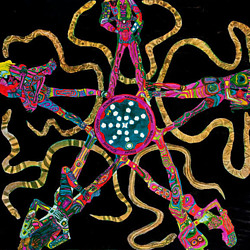 Mari Tepper: Laying it on the Line
Mari Tepper: Laying it on the Line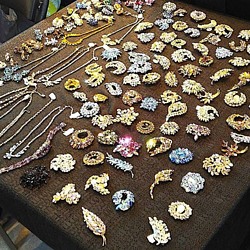 Nice Ice: Valerie Hammond on the Genteel Charm of Vintage Canadian Costume Jewelry
Nice Ice: Valerie Hammond on the Genteel Charm of Vintage Canadian Costume Jewelry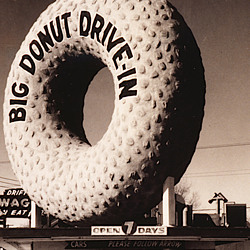 How Jim Heimann Got Crazy for California Architecture
How Jim Heimann Got Crazy for California Architecture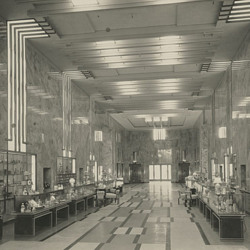 Modernist Man: Jock Peters May Be the Most Influential Architect You've Never Heard Of
Modernist Man: Jock Peters May Be the Most Influential Architect You've Never Heard Of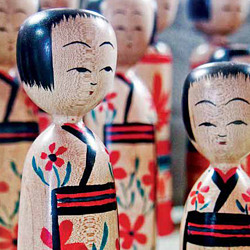 Meet Cute: Were Kokeshi Dolls the Models for Hello Kitty, Pokemon, and Be@rbrick?
Meet Cute: Were Kokeshi Dolls the Models for Hello Kitty, Pokemon, and Be@rbrick? When the King of Comedy Posters Set His Surreal Sights on the World of Rock 'n' Roll
When the King of Comedy Posters Set His Surreal Sights on the World of Rock 'n' Roll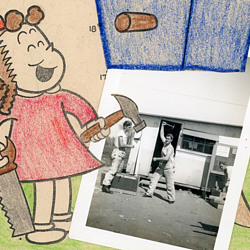 How One Artist Makes New Art From Old Coloring Books and Found Photos
How One Artist Makes New Art From Old Coloring Books and Found Photos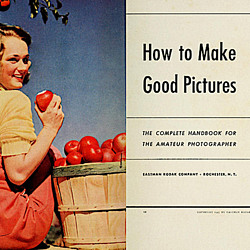 Say Cheese! How Bad Photography Has Changed Our Definition of Good Pictures
Say Cheese! How Bad Photography Has Changed Our Definition of Good Pictures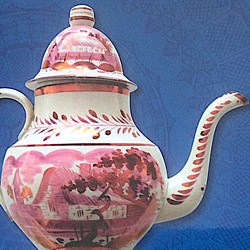 Middle Earthenware: One Family's Quest to Reclaim Its Place in British Pottery History
Middle Earthenware: One Family's Quest to Reclaim Its Place in British Pottery History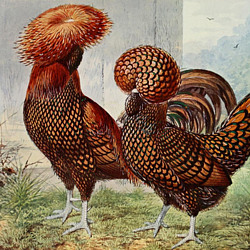 Fancy Fowl: How an Evil Sea Captain and a Beloved Queen Made the World Crave KFC
Fancy Fowl: How an Evil Sea Captain and a Beloved Queen Made the World Crave KFC
Gary,
I see you are bombarded with questions of value for the collectable items. So it gives me the courage to ask the same. I have a wooden cabinet like you put in your wife’s card studio. I’m wanting to donate it to a benefit auction on behalf of our church building fund. I would like to know what should the reserve be? Any idea of the cabinet’s value. I appreciate you giving your time and attention to these many requests. Alice